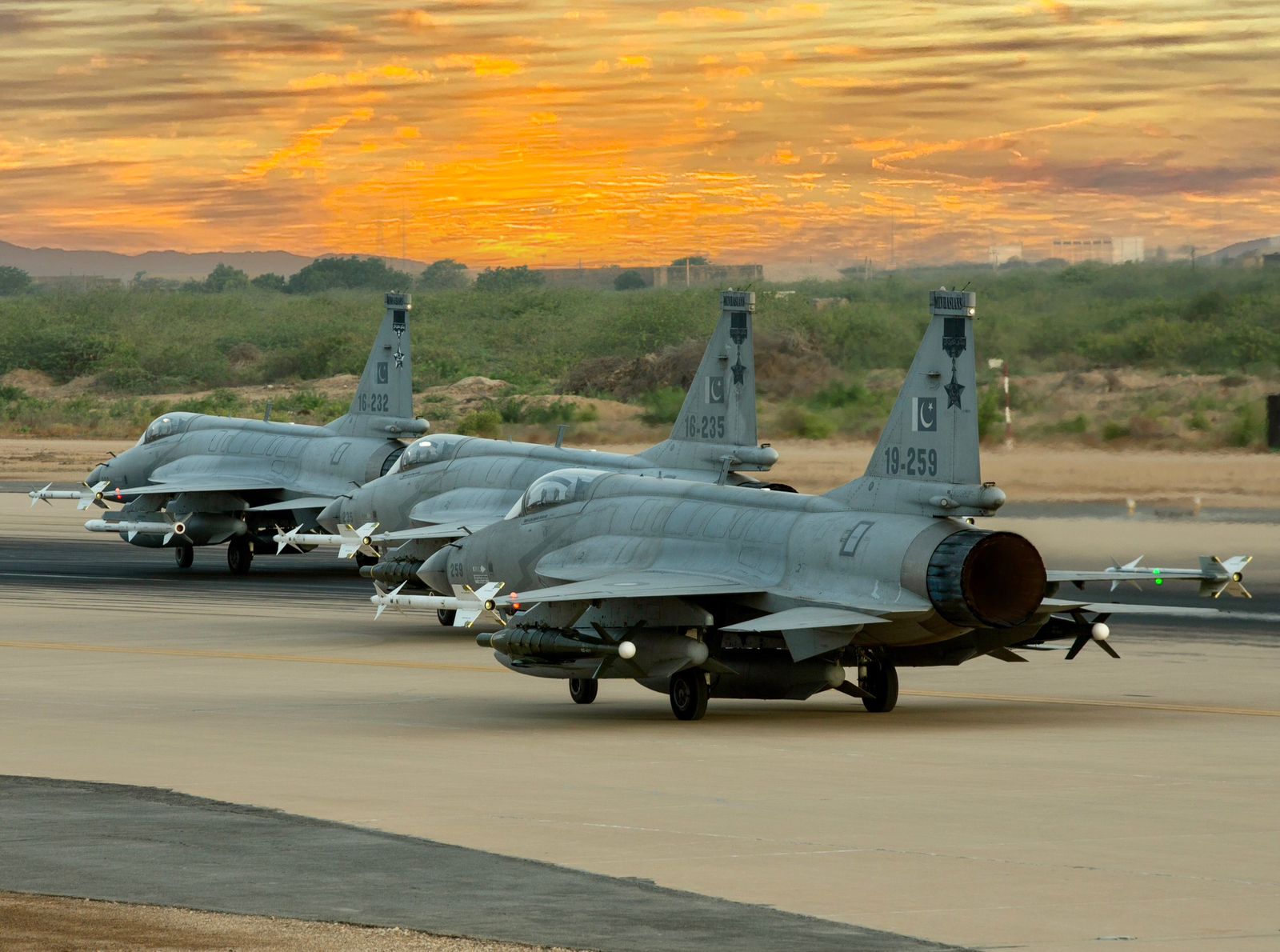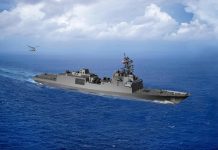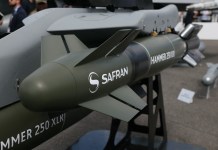The French President’s historic 2023 visit to Bangladesh to pitch the Rafale fighter jets may have failed to yield results.
The Bangladesh government, wary of the aircraft inducted by its neighbouring Indian Air Force (IAF), is reportedly planning to acquire 20 Chinese J-10CE “Vigorous Dragon” multi-role fighter jets.
Interestingly, the Pakistan Air Force claimed that its J-10C fighters were behind the shooting down of India’s Rafale jets during the 4-day war between the two countries in May 2025, a claim India rejects.
Pakistan officially inducted the J-10C into its air force in 2022. It serves as a medium-weight fighter alongside the China-Pakistan jointly developed lightweight fighter jet, the JF-17. They are inducted into the Number 15 Squadron ‘Cobras’ of the PAF and are based at Minhas Air Base.
The deal, estimated to be USD 2.20 billion, includes procurement, training, maintenance, and associated expenses. The Bangladesh government is likely to enter a government-to-government agreement. The deal could be inked during the financial year 2026 or 2027.
Documents quoted by the Bangladesh media indicate that the payments are likely to be spread across 10 fiscal years till the Financial Year 2035-36.
The procurement will be conducted as part of Bangladesh’s plans to modernize its armed forces under the Forces Goals 2030.
The Bangladesh Air Force (BAF) already has 16 Chengdu J-7 fighter jets from China in its inventory. Apart from this, Bangladesh floated a tender for eight Multi-Role Combat Aircraft (MRCA) in the financial year 2017-2018. The tender had a provision for ordering four more aircraft in the second tranche.
The procurement process was running behind schedule as COVID-19 threw a spanner in its modernisation plan. India even tried to pitch its indigenous Light Combat Aircraft (LCA), trying to leverage geographical continuity. But the Bangladesh establishment was veering towards a European fighter jet.
As the fight boiled down to the Eurofighter Typhoon and Dassault Rafale, French President Macron visited Dhaka in 2023, a first after 33 years.
A BAF official also indicated to the EurAsian Times that the final decision will come only after the next elections. The official also added: “With Rafale being operated by the Indian Air Force, the odds of a Eurofighter Typhoon have increased.”
India has inducted 36 Rafales in its air force and has placed an order for 26 Rafale M for its navy for aircraft-based operations. The induction into the IAF brought a windfall of orders for the French aerospace major Dassault.
Before the European fighter jet companies could strengthen their pitch, a popular uprising forced the Bangladeshi prime minister, Sheikh Hasina, to flee the country.
The J-10C entered BAF’s wishlist after Air Chief Marshal Hasan Mahmood Khan visited China in 2024, where he expressed the force’s plan to acquire multirole combat aircraft and attack helicopters.
Discussions on the purchase got traction during Prime Adviser Dr. Muhammad Yunus’s visit to Beijing in March 2025. Following the trip, an 11-member inter-ministerial committee—chaired by the Air Force chief—was formed to negotiate the deal, finalize the contract, and evaluate the G2G procurement process.
The BAF currently operates aging platforms such as the MiG-29 and F-7, which are becoming obsolete in modern combat scenarios. The BAF seeks to acquire J-10C fighter jets to boost its operational readiness and deterrence capabilities.
The committee led by the BAF Chief will negotiate with Chinese representatives to determine the final price of the aircraft, finalise payment terms, prepare the draft contract, and complete all procedures related to finalising and signing the agreement.
J-10CE
The J-10CE, an export variant of China’s J-10C, is a 4.5-generation multirole fighter jet featuring advanced avionics, radar, and long-range capabilities. The J-10C is in service with the People’s Liberation Army Air Force (PLAAF), the People’s Liberation Army Naval Air Force (PLANAF), and the Pakistan Air Force (PAF).

The J-10C debuted in the Middle East with an appearance at the Dubai Air Show in November 2023. It was the first visit of the acrobatic team to Dubai since it switched from flying the J-10A to the new J-10C.
In January 2024, a video published by the Chinese People’s Liberation Army Air Force (PLAAF) showed a very rare refueling of seven J-10C Fighter jets by a single YY-20 refueling aircraft in a stunning display of PLAAF’s might. The J-10C aircraft were on their way to participate in the World Defense Show in Saudi Arabia.
The J-10C is an upgraded version of the J-10B. It features an indigenous AESA radar, imaging infrared seeker (IIR) PL-10, WS-10B engine, and PL-15 air-to-air missiles.
The J-10 C is often compared to upgraded variants of the American F-16 Fighting Falcon. Like the F-16, the J-10 boasts a highly agile, aerodynamically unstable airframe stabilized by a computer in its fly-by-wire flight control system.
Its capabilities include beyond-visual-range engagement, precision air-to-ground strike, digital glass cockpit instruments, in-flight refueling, and electronic warfare.
After Pakistan, Bangladesh is the second largest importer of Chinese weapons, according to data published by the Stockholm International Peace Research Institute (SIPRI) in 2024.
Chinese armaments account for more than two-thirds of the total inventory of Bangladesh’s Armed Forces. Critical weapons systems like Ming-class submarines or MBT-2000 tanks are of Chinese origin.
Low cost and no strings attached are the prime motivations for purchasing Chinese weapons. Other major arms exporters to Dhaka include Turkey, the UK, and Russia.
In 2024, Bangladesh accused Chinese companies of supplying faulty parts and technical problems with its imported military hardware for corvettes, petrol crafts, and onshore patrol vehicles.
The Bangladesh Air Force has raised red flags about technical problems with Chinese-made F-7 fighter jets, short-range air defense systems, and the firing ammunition for its Chinese-made K-8W aircraft.
Critics indicate that the inferior quality of the military hardware poses serious threats to military readiness and is detrimental to the national security of Bangladesh.
Shifting Power Balance In South Asia
Having Chinese fighter jets on both its borders is worrisome for India. China has also built a submarine base in Bangladesh, and if the Chinese Navy gains access to this strategic base, it will be a matter of concern for India, considering its proximity to India’s Eastern Naval Command.
Bangladesh ordered its first two submarines from China in 2013 for the meagre price of just US$203 million as a part of its military modernization under the Forces Goal 2030. The submarines are Type 035G diesel-electric attack submarines, a Ming-class variant first commissioned into the PLA Navy (PLAN) in 1990.
China refitted and upgraded the two vessels before handing them over to Bangladesh in 2016. A year after delivering the submarines, the Chinese state-owned defense contractor Poly Technologies secured a US$1.2-billion contract with Bangladesh to build a new submarine support facility on the country’s south-eastern coast.
China has long sought access to the Bay of Bengal and the Arabian Sea because of its limited and unfavorable maritime geography, particularly along the Western Pacific. China’s entry into the Bay of Bengal was being facilitated earlier by Myanmar and now by Bangladesh.
- This is an Opinion Article




